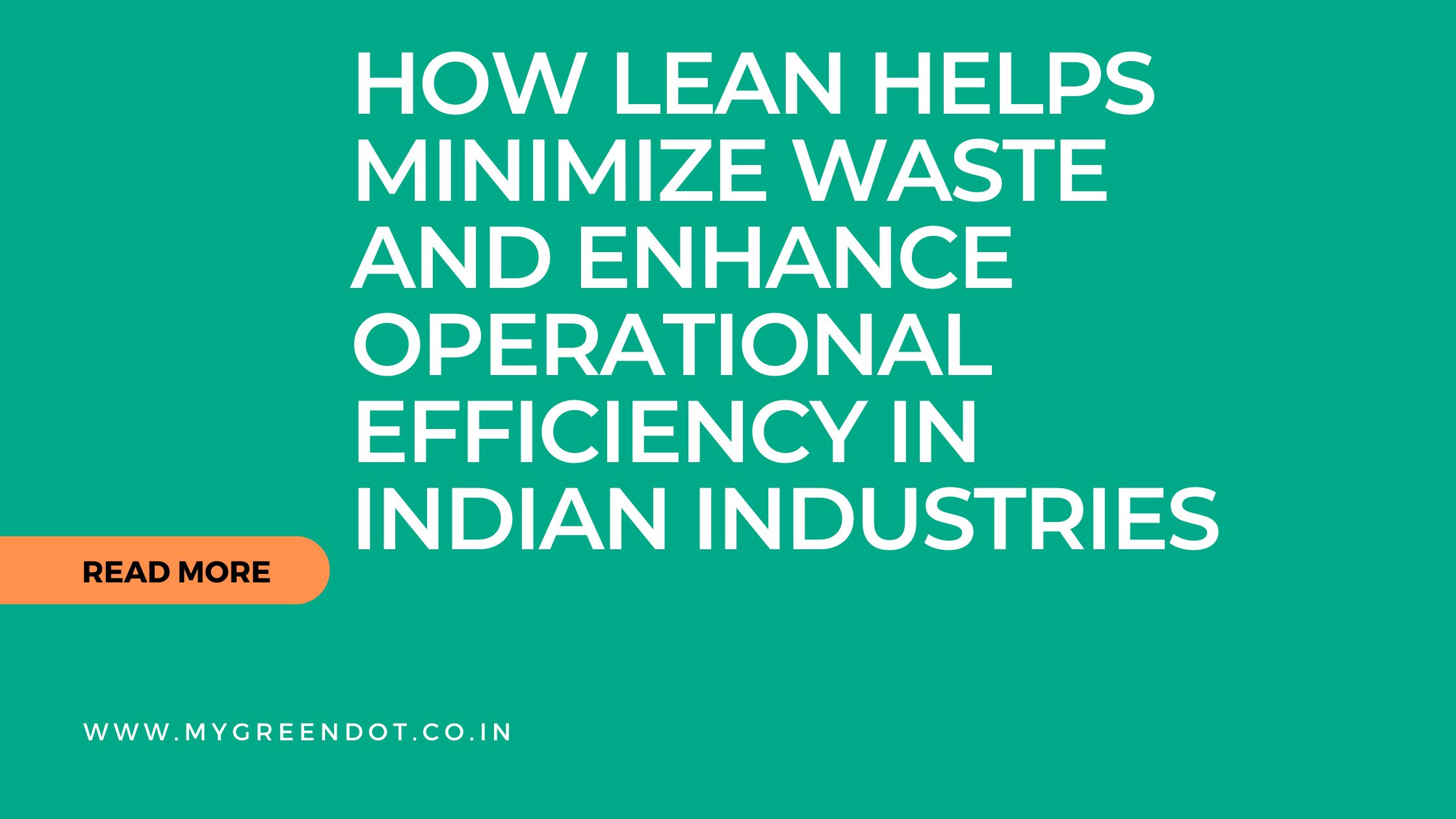Introduction to Lean Methodology in India
Lean methodology has transformed operations across various Indian industries, from manufacturing to healthcare, aiming to cut out inefficiencies and improve overall productivity. Originating from the Toyota Production System in Japan, Lean focuses on maximizing value by eliminating waste. Its application in India has shown impressive results, with studies revealing significant cost reductions and productivity boosts across sectors. For instance, a survey by The Economic Times highlighted that Lean implementation can lead to an average cost reduction of 10-15% in Indian industries. Given the competitive landscape and the demand for high-quality products, Indian companies are increasingly turning to Lean to gain an edge.
Core Principles of Lean
Lean is founded on five key principles:
1. Identify Value – Pinpointing what the customer values most and structuring processes around delivering that.
2. Map the Value Stream – Mapping out each step of the production process to distinguish value-adding activities from those that don’t contribute directly to the end product or service.
3. Create Flow – Ensuring a smooth, uninterrupted flow of work, reducing bottlenecks, and accelerating processes.
4. Establish Pull – Avoiding overproduction by aligning output with actual demand, thus minimizing inventory and storage costs.
5. Pursue Perfection – Lean requires an ongoing commitment to improvement, ensuring processes are continuously refined and optimized.
These principles guide Indian companies in refining operations to reduce costs and improve product and service quality. McKinsey & Company’s research shows that Lean implementation can increase productivity in Indian industries by 20-30%, underscoring its impact on efficiency and effectiveness.
Types of Waste in Lean (Muda)
Waste, or "Muda" in Japanese, refers to any activity that doesn’t add value for the customer. Indian industries often face specific challenges with waste in processes, which Lean effectively addresses. Lean identifies eight main types of waste:
- Overproduction – Making more than what’s needed, leading to excess inventory.
- Waiting – Delays in production due to unoptimized workflow or resource availability.
- Transport – Unnecessary movement of materials or people.
- Extra Processing – Conducting more work than is essential for the final product.
- Inventory – Holding excess stock that ties up capital and storage.
- Motion – Redundant movements by workers due to poor workspace organization.
- Defects – Errors that require rework, consuming time and resources.
- Unused Talent – Failing to leverage the full potential of employees.
For Indian companies, the potential savings and productivity gains from reducing these wastes are immense. The Indian Institute of Management, Ahmedabad found that implementing Lean in a manufacturing company led to a 30% reduction in inventory levels and a 25% increase in efficiency.
Identifying and Mapping Waste
Value Stream Mapping (VSM) is one of Lean’s essential tools for Indian industries, allowing businesses to visualize and track every step in their processes. VSM creates a clear roadmap that identifies both value-adding and non-value-adding steps. By visually mapping out workflows, companies can immediately spot where resources are wasted.
A Confederation of Indian Industry (CII) study found that Lean implementation led to a 50% reduction in lead time, showing how efficient processes become when waste is systematically eliminated.
How Lean Enhances Efficiency in Indian Industries
The adoption of Lean principles leads to substantial gains in efficiency across Indian industries, helping companies improve performance in several key areas:
- Shorter production cycles – Processes become faster and more reliable, with production time reduced by up to 25-30% according to the National Productivity Council.
- Lower operational costs – Lean’s focus on cutting out unnecessary steps leads to substantial cost savings. PwC India reports that Lean implementation results in a 20-30% reduction in operational costs.
- Better on-time delivery – With streamlined processes, Indian companies experience improved delivery times. A study by the Indian Institute of Technology, Mumbai found that Lean adoption resulted in a 15-20% increase in on-time delivery performance.
Lean not only enhances operational efficiency but also supports Indian industries in meeting quality standards and responding flexibly to market demands.
Kaizen: Continuous Improvement
The concept of Kaizen (continuous improvement) is a pillar of Lean methodology, empowering employees to suggest and implement incremental improvements regularly. Kaizen cultivates a culture of engagement, where employees at all levels actively contribute to refining processes. In India, where employee engagement is critical to operational success, Kaizen creates an inclusive work culture focused on shared goals.
A Lean Enterprise Institute India survey revealed that 70% of Indian companies experienced a significant improvement in quality through Kaizen and Lean practices. This improvement shows how continuous, small changes can make a big difference in overall efficiency.
Just-in-Time (JIT) Production
Just-in-Time (JIT) production minimizes excess inventory, enabling companies to produce only what is immediately needed. By doing so, Indian industries can avoid the costs associated with holding large inventories and respond to demand fluctuations more efficiently.
Kanban System for Workflow Control
The Kanban system is a visual management tool that helps control and pace production according to demand. In Indian industries, Kanban is commonly used to prevent overproduction and manage workflows effectively. By maintaining a steady production flow, companies can balance resources, avoid bottlenecks, and ensure that products move smoothly through each stage.
5S Methodology for Workplace Organization
The 5S methodology is a Lean tool that encourages companies to maintain an organized, efficient, and clean work environment. Each of the “5S” principles contributes to creating a structured workplace:
- Sort – Removing unnecessary items.
- Set in Order – Organizing items for easy access.
- Shine – Regular cleaning.
- Standardize – Establishing procedures.
- Sustain – Ensuring practices are maintained.
This system has proven effective in improving productivity. A survey by the Indian School of Business found that implementing Lean practices, including 5S, can reduce cycle times by 10-20%, supporting faster and more streamlined processes.
Lean Tools for Minimizing Waste
Lean offers a wide range of tools to help companies address specific waste issues:
- Root Cause Analysis – Identifying the root causes of issues to prevent recurring problems.
- PDCA (Plan-Do-Check-Act) – A continuous cycle used for testing and implementing solutions.
- Fishbone Diagrams – Analyzing potential factors causing inefficiencies.
In Indian industries, these tools ensure that waste reduction efforts are effective and sustainable. According to the National Manufacturing Competitiveness Council, Indian industries adopting Lean saw a 25-30% reduction in production time, demonstrating the power of these tools in enhancing productivity.
Case Studies of Lean in Action
Several Indian companies have successfully adopted Lean, with notable results:
- A textile company implementing Lean saw a 30% reduction in lead time, as per a case study by the Indian Institute of Management, Indore.
- Healthcare organizations applying Lean reduced patient wait times by 20%, according to a study by IIM Lucknow.
- Manufacturing firms have decreased operational costs by 15-20% due to streamlined processes, as reported by the National Productivity Council.
Challenges in Implementing Lean in India
Lean implementation in Indian industries faces unique challenges, such as cultural resistance, training requirements, and the need for continuous monitoring. To address these, it’s crucial for management to actively support Lean initiatives and foster an inclusive culture that embraces change.
The Future of Lean in India
As technology evolves, Indian industries are integrating Lean practices with digital tools like IoT, AI, and data analytics. These advancements enable real-time tracking and predictive maintenance, taking Lean efficiency to new levels. According to Business Insider India, Lean practices have helped Indian companies cut their carbon footprint by 40-50%, underscoring Lean’s role in fostering sustainable, eco-friendly business practices.
FAQs
- What is Lean methodology?
Lean is a methodology focused on maximizing value by eliminating waste, thereby improving efficiency and reducing costs.
- How does Lean benefit Indian industries?
Lean enables Indian companies to cut costs, improve productivity, and reduce cycle times by systematically identifying and eliminating wasteful activities.
- What are the core principles of Lean?
Lean is based on five principles: Identify Value, Map the Value Stream, Create Flow, Establish Pull, and Pursue Perfection.
- How does Lean help with inventory management?
Through Just-in-Time (JIT) production and other practices, Lean allows companies to keep inventory levels low, reducing costs and increasing flexibility.
- What is Kaizen, and why is it important?
Kaizen, meaning “continuous improvement,” empowers employees to propose regular improvements, creating a culture of ongoing refinement and engagement.
- What impact does Lean have on customer satisfaction?
According to the Lean Enterprise Institute India, companies implementing Lean saw a 20-30% increase in customer satisfaction, as the focus on efficiency improves both service quality and delivery times.


